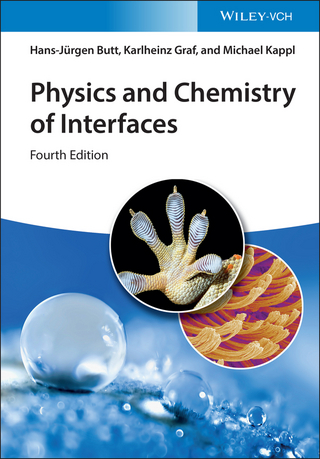
The Molecule as Meme
Morgan & Claypool Publishers (Verlag)
978-1-64327-289-4 (ISBN)
It was not until 1971 that the authority for defining scientific units, the General Conference of Weights and Measures got around to defining the unit that is the basis of chemistry (the mole, or the quantity of something). Yet for all this tardiness in putting the chemical sciences on a sound quantitative basis, chemistry is an old and venerable subject and one naturally asks the question, why? Well, the truth is that up until the mid-1920s, many physicists did not believe in the reality of molecules. Indeed, it was not until after the physics community had accepted Ernest Rutherford's 1913 solar-system-like model of the atom, and the quantum mechanical model of the coupling of electron spins in atoms that physicists started to take seriously the necessity of explaining the chemical changes that chemists had been observing, investigating and recording since the days of the alchemists.
My career has been in the physical sciences after obtaining a Ph.D. in chemical physics from Cambridge University, 1981. Firstly, as a research scientist in the universities of Cambridge, Oxford, Harvard and Illinois, and subsequently as a physicist at the Institute Laue-Langevin, France; the world's largest facility for the investigation of condensed matter science via the technique of neutron scattering. During this period as a research scientist, I published more than sixty technical papers and invited review articles in the peer-reviewed literature. I left research in 1992 and moved to the world of science publishing and the communication of science by becoming the European editor for the physical sciences for the AAAS's Science. Subsequently, I was the Assistant Executive Secretary of the International Union of Pure and Applied Chemistry, the agency responsible for the advancement of chemistry through international collaboration. Most recently, 2003-2008, I was the head of publications at the Bureau international des poids et mesures (BIPM). The BIPM is charged by the Metre Convention of 1875 with ensuring world-wide uniformity of measurements and their traceability to the International System of Units (SI). It was during these years at the BIPM that I became interested in, and familiar with the origin of the Metric System, its subsequent evolution into the SI, and the coming transformation into the Quantum-SI. At the BIPM, I was the editor of their journal Metrologia, the leading technical publication for research on all matters related to weights and measures (published by the IOP on behalf of the BIPM). I was also responsible for editing the English and French texts (the French being the official text) of all the BIPM's publication; this included the SI Brochure, the BIPM's flagship publication about the SI, which is written by the BIPM's Consultative Committee on Units. Apart from my technical publications and my editorial experience at peer-review journals and magazines, I have written widely about science, technology, the impact of science on society and the individual for general-interest magazines such as New Scientist and for more specialized magazines (Chemistry in Britain, Physics Today, Chemical & Engineering News, Physics World and Chemistry and Industry).
Introduction: are molecules real?
Author biography
1. Atomism
2. Order in the kinetic chaos
3. How molecules have been viewed
4. The molecular meme: Avogadro and his constant
5. The reality of molecules
6. The physical chemistry primer
7. How is energy partitioned in molecules?
8. The quantum mechanical synthesis of chemistry and physics
9. Molecules and emergent properties
10. Making measurable the invisibly small: the interaction of molecules with electric and magnetic fields
11. Optical activity
12. From the point of view of the molecule
13. Conclusion: molecules as microcosms
| Erscheinungsdatum | 11.04.2019 |
|---|---|
| Reihe/Serie | IOP Concise Physics |
| Verlagsort | San Rafael |
| Sprache | englisch |
| Maße | 178 x 254 mm |
| Gewicht | 333 g |
| Themenwelt | Naturwissenschaften ► Physik / Astronomie ► Atom- / Kern- / Molekularphysik |
| Naturwissenschaften ► Physik / Astronomie ► Thermodynamik | |
| ISBN-10 | 1-64327-289-6 / 1643272896 |
| ISBN-13 | 978-1-64327-289-4 / 9781643272894 |
| Zustand | Neuware |
| Informationen gemäß Produktsicherheitsverordnung (GPSR) | |
| Haben Sie eine Frage zum Produkt? |
aus dem Bereich


